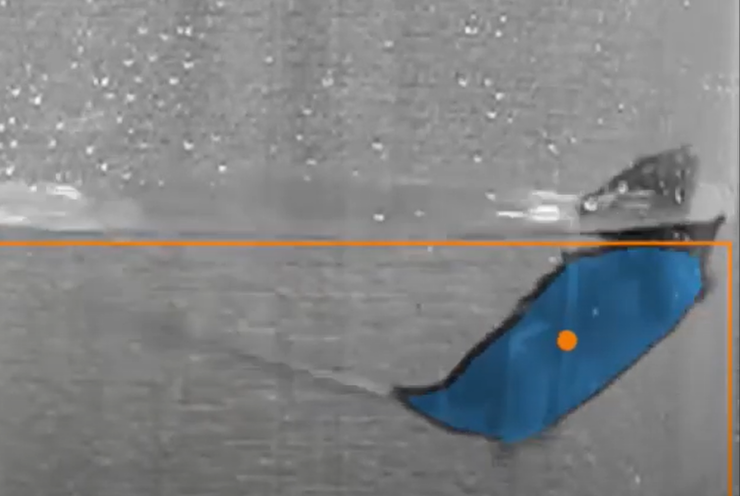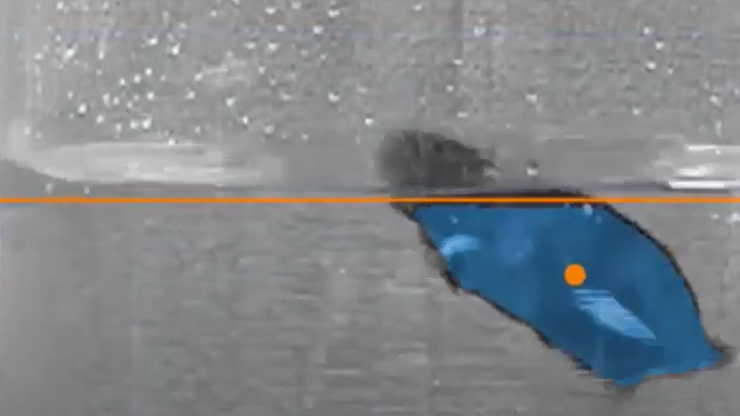The key to automating the Forced swim test is determining what’s struggling versus swimming versus treading water versus floating
Using ANY-maze you simply need to determine immobility sensitivity and duration and ANY-maze will automatically discriminate the periods of mobility and immobility for you. Get all the details on the Benefits tab below.
On the other tabs you'll find recommended equipment and a list of results that are especially useful in the forced swim test.
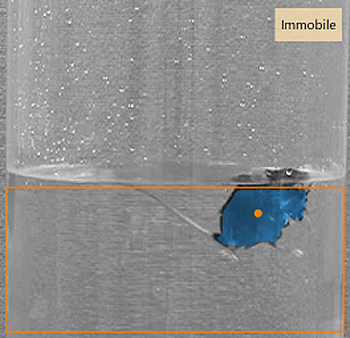
Immobility detection can be adjusted
Immobility detection in ANY-maze is based on immobility sensitivity (exactly how still the animal has to be) and immobility time (how long it has to stay that way).
In the FST, it’s common to define immobility as the time that the animal spends not making any movements beyond those required to keep its head above water – which would require both immobility sensitivity and time to be set to relatively low values.
And you can change these settings at any time, even after a test is completed. ANY-maze simply re-analyses the data it collected during the tests, which allows you to tease out differences it would be impossible to gather manually.
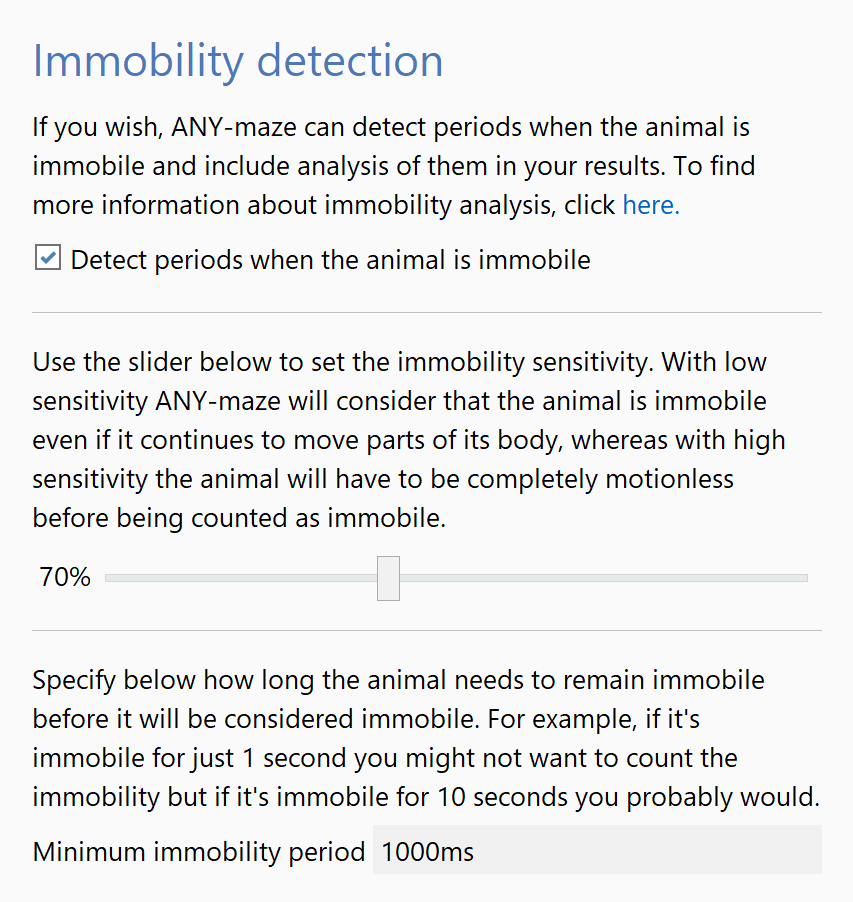
Testing in multiple apparatus simultaneously
Tracking simultaneously in, for example, four FST tanks is a great way to speed up the throughput in an experiment.
- Setting up multiple tanks is hardly any more work than setting up one, as most settings are automatically applied across all the apparatus.
- You can have a single camera for each tank, or you can have multiple tanks viewed by the same camera, or any combination – for example, two cameras each viewing two tanks.
- Tests in all the apparatus can be run independently, or you can control them together if you prefer.
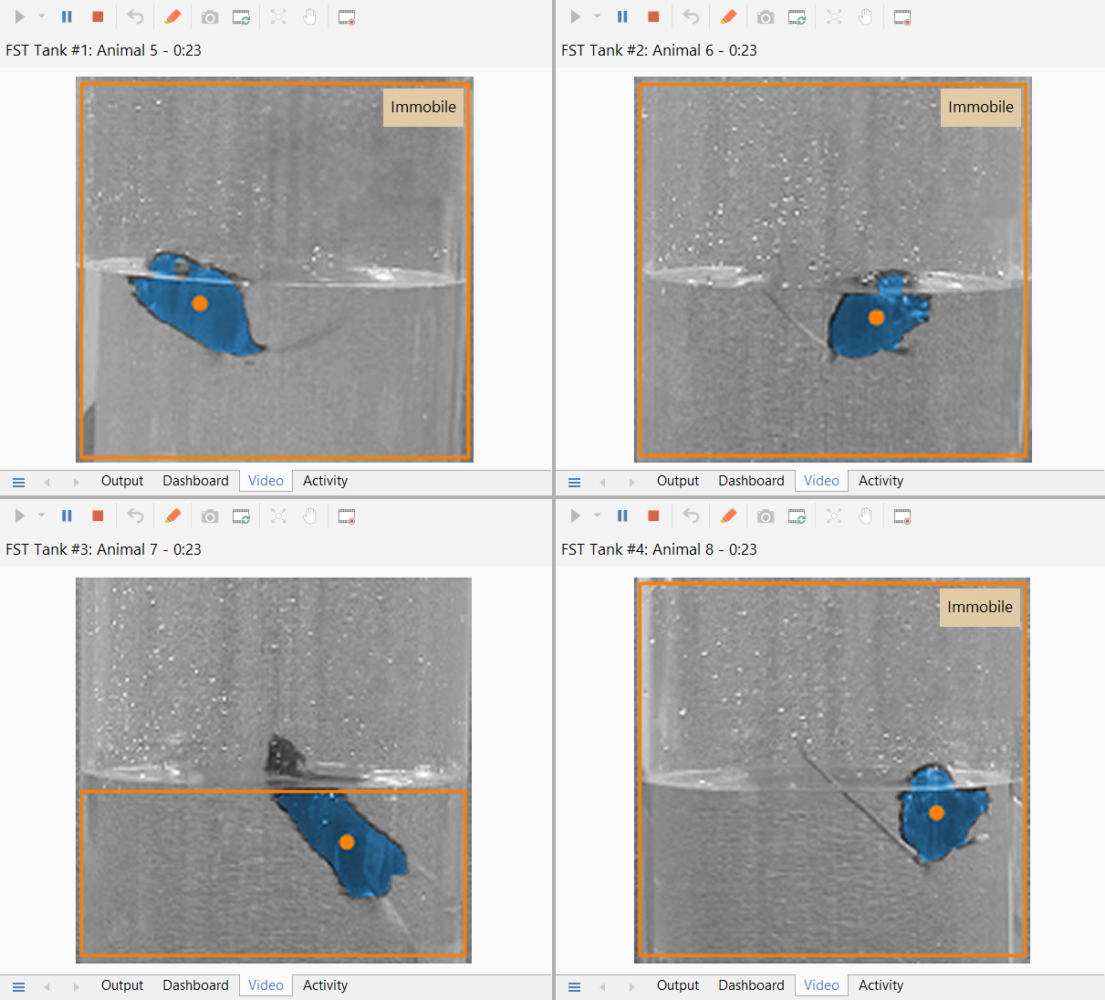
Analysis across time
ANY-maze can analyse most results across time. For example, the image on the right shows a plot of time immobile, based on 30 second time segments and shows how in this experiment, the animals tended to struggle less during the second half of the test.
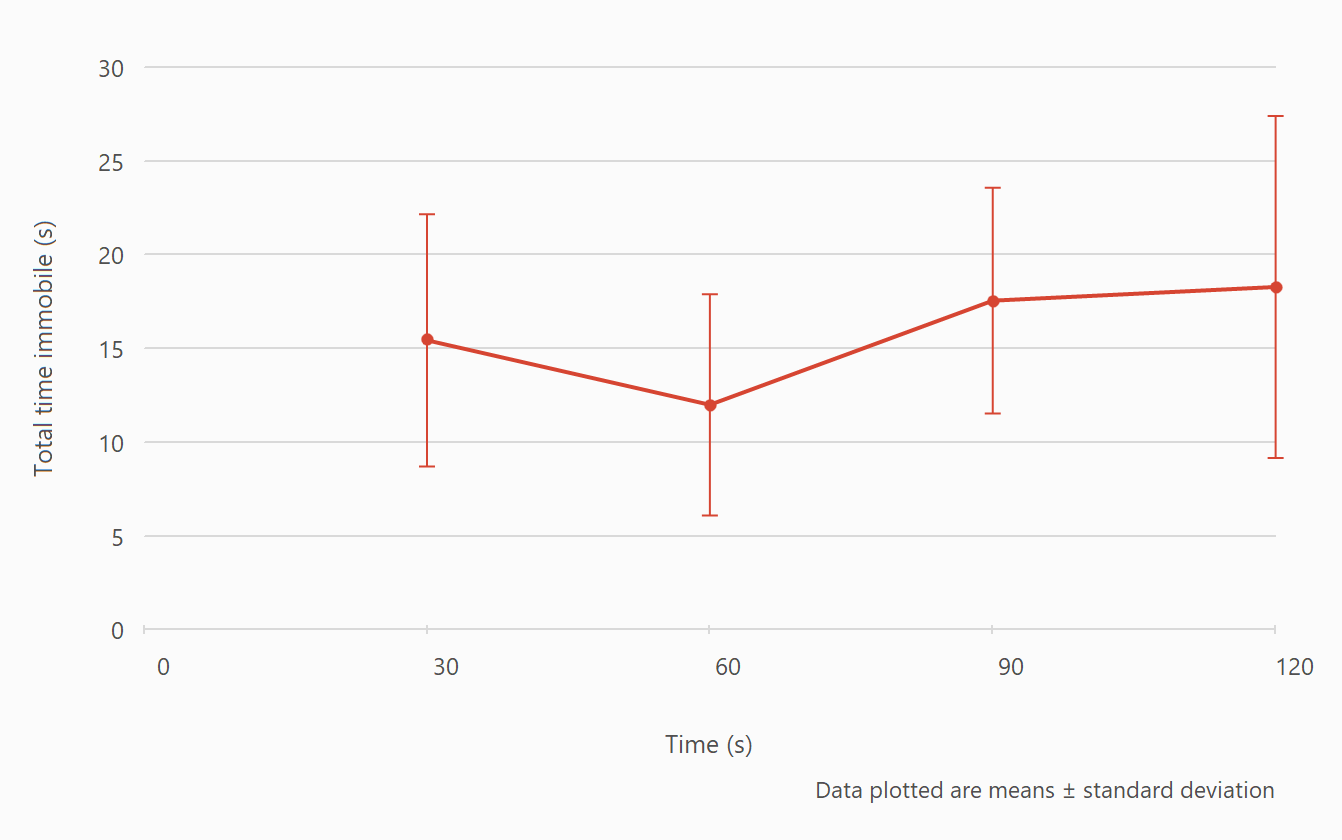
Results
ANY-maze can provide literally hundreds of results for any test, but some of those that are commonly used in the Forced swim test include:
- Time mobile
- Time immobile
- Immobile episodes
- Total distance travelled
Forced swim test tank
We manufacture our own forced swim test tank, which is suitable for both rats and mice.
The tank has convenient carrying handles, a centre drain and a valve for water level adjustment and initial emptying.
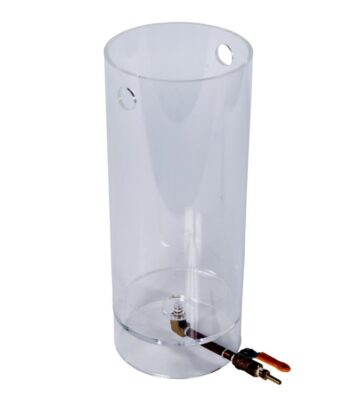
Cameras
USB camera
The ANY-maze USB camera is an excellent choice for the Forced swim test. We recommend fitting this camera with a varifocal (zoom) lens, so you can zoom in and out, which is especially useful if you're viewing more than one apparatus with the same camera.
View more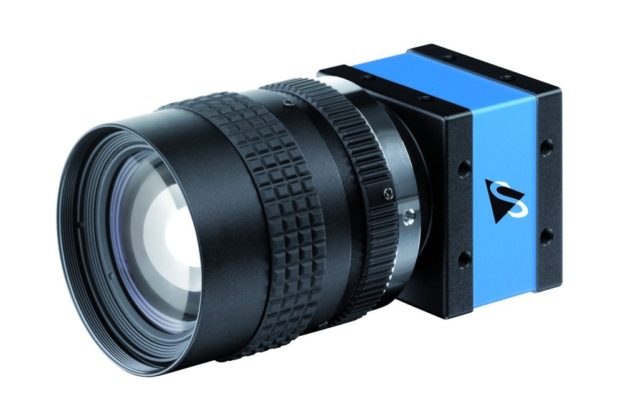
Web cam
A web cam provides an inexpensive alternative to the ANY-maze camera. You usually can't zoom webcam lenses, but if you're able to adjust the distance of the camera from the apparatus, then a webcam should work well. Another potential issue is the cable length; most webcams have quite short cables.
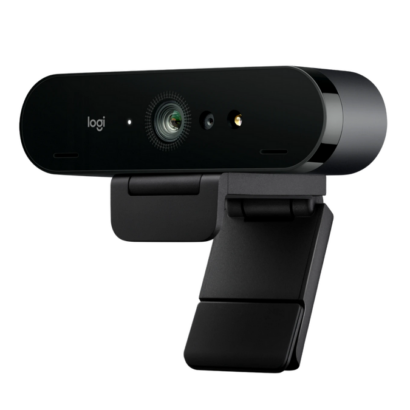
Langley MR et al. (2021) Characterization of nonmotor behavioral impairments and their neurochemical mechanisms in the MitoPark mouse model of progressive neurodegeneration in Parkinson’s disease. Experimental Neurology. 341:113716
Imran I et al. (2021) Grewia asiatica Berry Juice Diminishes Anxiety, Depression, and Scopolamine-Induced Learning and Memory Impairment in Behavioral Experimental Animal Models. Frontiers in nutrition. 7: 587367
Singhal G et al. (2021) TNF signaling via TNF receptors does not mediate the effects of short-term exercise on cognition, anxiety and depressive-like behaviors in middle-aged mice. Behavioural Brain Research. 408:113269
Frankot M et al. (2020) Choice-based assessments outperform traditional measures for chronic depressive-like behaviors in rats after brain injury. Behavioural Brain Research. 395:112879
Stairs DJ et al. (2020) Environmental enrichment increases cue-dependent freezing and behavioral despair but decreases anxiety-like behavior in rats. Pharmacology Biochemistry and Behavior. 196: 172979
Yokoyama R et al. (2020) (S)-norketamine and (2S,6S)-hydroxynorketamine exert potent antidepressant-like effects in a chronic corticosterone-induced mouse model of depression. Pharmacology Biochemistry and Behavior. 191:172876
Ueno H et al. (2019) Comprehensive behavioral study of the effects of vanillin inhalation in mice. Biomedicine & Pharmacotherapy. 115:108879
Tayyab M et al. (2019) Antidepressant and Neuroprotective Effects of Naringenin via Sonic Hedgehog-GLI1 Cell Signaling Pathway in a Rat Model of Chronic Unpredictable Mild Stress. Neuromol Med. 21:250–261
Ueno H et al. (2019) Anti-depressive-like effect of 2-phenylethanol inhalation in mice Biomedicine & Pharmacotherapy. 111:1499-1506
N.C. Lax et al. (2018) Cyanobacterial extract with serotonin receptor subtype 7 (5‐HT7R) affinity modulates depression and anxiety‐like behavior in mice; Synapse 2018; 72(11): e22059
S. Haridas et al. (2018) Whisker dependent responsiveness of C57BL/6J mice to different behavioral test paradigms; Behavioural Brain Research 2018; 336: 51-58
W. Ye et al. (2018) The long-term effect of maternal dietary protein restriction on 5-HT1A receptor function and behavioral responses to stress in adulthood; Behavioural Brain Research 2018; 349: 116-124
M.J. Caruso et al. (2018) Adolescent social stress increases anxiety-like behavior and ethanol consumption in adult male and female C57BL/6J mice; Scientific Report 2018; 8:10040
O. Vranjkovic et al. (2018) Ketamine administration during a critical period after forced ethanol abstinence inhibits the development of time-dependent affective disturbances; Neuropsychopharmacology 2018; 43:1915-1923
KM Lee et al. (2017) Anxiolytic Effects of Buspirone and MTEP in the Porsolt Forced Swim Test. Chronic Stress
M Nagasawa et al. (2017) Single and chronic l-serine treatments exert antidepressant-like effects in rats possibly by different means. Amino Acids.
Rudyk CA, et al. (2017) Age and Chronicity of Administration Dramatically Influenced the Impact of Low Dose Paraquat Exposure on Behavior and Hypothalamic-Pituitary-Adrenal Activity. Front. Aging Neurosci. 9:222.
Deep SN, et al. (2016) Neuroprotective Role of L-NG-Nitroarginine Methyl Ester (L-NAME) against Chronic Hypobaric Hypoxia with Crowding Stress (CHC) Induced Depression-Like Behaviour. PLOS ONE 11(4): e0153371.
Kushwah N, et al. (2016) Neuroprotective Role of Intermittent Hypobaric Hypoxia in Unpredictable Chronic Mild Stress Induced Depression in Rats. PLOS ONE 11(2): e0149309.
Chiu CT et al. (2015) The mood stabilizer lithium potentiates the antidepressant-like effects and ameliorates oxidative stress induced by acute ketamine in a mouse model of stress. International Journal of Neuropsychopharmacology.2015:1–13
Das et al. (2015) Disrupting monotony during social isolation stress prevents early development of anxiety and depression like traits in male rats. BMC Neuroscience. 16:2
Chatterjee M et al. (2012). Comparative evaluation of forced swim test and tail suspension test as models of negative symptom of schizophrenia in rodents. ISRN Psychiatry 2012:1- 5
Walf AA and Frye CA (2008) Parity and estrogen-administration alter affective behavior of ovariectomized rats. Physiology and Behavior. 93:351-356
Naidu PS (2007) NIH 11082 produces anti-depressant-like activity in the mouse tail-suspension test through a delta-opioid receptor mechanism of action. Eur J Pharmacol. 566:132-6
Walf AA et al. (2007) Antisense Oligodeoxynucleotides for Estrogen Receptor-beta and alpha Attenuate Estradiol’s Modulation of Affective and Sexual Behavior, Respectively. Neuropsychopharmacology. 33:431-40
Lephart ED et al. (2007) Use of equol for ameliorating or preventing neuropsychiatric and neurodegenerative diseases or disorders United States Patent 20070043108
Zeng H et al. (2007). Thyrotropin-Releasing Hormone Receptor 1-Deficient Mice Display Increased Depression and Anxiety-Like Behavior. Molecular Endocrinology 21: 2795-2804

 Setting up apparatus
Setting up apparatus Video capture & tracking
Video capture & tracking Observing behaviour
Observing behaviour Connecting equipment
Connecting equipment Automating complex tests
Automating complex tests Running tests
Running tests Results
Results Visualising data
Visualising data Analysis
Analysis Transferring data
Transferring data Open field
Open field Water-maze
Water-maze Y-maze
Y-maze Fear conditioning
Fear conditioning Novel object
Novel object Barnes maze
Barnes maze Radial arm maze
Radial arm maze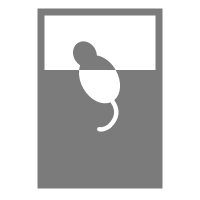 Forced swim test
Forced swim test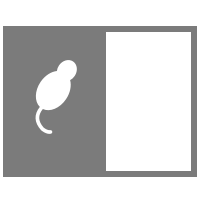 Light/dark box
Light/dark box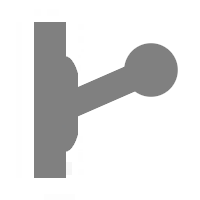 Operant conditioning
Operant conditioning Zebrafish
Zebrafish Computers
Computers Multifunction remote
Multifunction remote Accessories
Accessories Digital interface
Digital interface Optogenetic interface
Optogenetic interface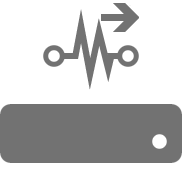 Synchronisation interface
Synchronisation interface Relay interface
Relay interface Audio interface
Audio interface Touch interface
Touch interface Analogue interface
Analogue interface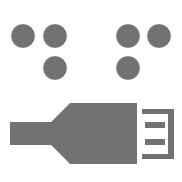 USB TTL cable
USB TTL cable Animal shocker
Animal shocker Components
Components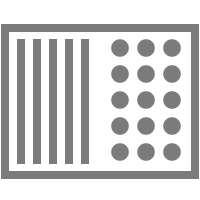 Place preference
Place preference ANY-box
ANY-box T-maze
T-maze Zero maze
Zero maze Hole board
Hole board Sociability cage
Sociability cage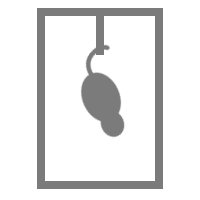 Tail suspension
Tail suspension OPAD
OPAD RAPC
RAPC Thermal gradient ring
Thermal gradient ring Operon
Operon Activity Wheel
Activity Wheel Full ANY-maze licence
Full ANY-maze licence Other licence types
Other licence types Developing countries licence
Developing countries licence Contact support
Contact support Support Policy
Support Policy FAQs
FAQs Guides
Guides Downloads
Downloads Send us files
Send us files Activate a licence ID
Activate a licence ID Contact us
Contact us Blog
Blog About
About Testimonials
Testimonials Privacy Policy
Privacy Policy
